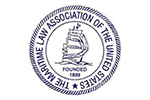Wrongful Death Attorneys
5th Circuit Case Shows Washington Bridge Repairmen May Be Able to Recover Compensation Under the Jones Act
Washington has over 7,000 bridges across the state that provide critical transportation links over waterways. Washington’s Department of Transportation engages different programs to inspect and repair these towering structures that have been built over the last century. While bridges are often placed over waterways, they are rarely associated with a life at sea. However, at the beginning of 2013, the 5th Circuit Court of Appeals issued an opinion that allowed two ironworkers to recover from a construction contractor under the Jones Act. In this case, the lower and appellate courts both determined the ironworkers met the definition of a seaman and could recover under the Jones Act and general maritime law.
The United States Supreme Court case Chandris, Inc. v. Latsis, 515 U.S. 347 (1995), established a two-pronged test to determine who is a seaman. To qualify, one must first show the employee’s duties contribute to the function of the vessel or to the accomplishment of its mission. Next, the employee must have a connection to a vessel that is substantial in terms of both its duration and its nature. In the 5th Circuit case Grab v. Boh Brothers Construction Co., the ironworkers performed part of their work from a derrick barge that would routinely move in the water along the length of the bridge as work progressed. One of the workers spent 30-95% of his time on the barge and was partially responsible for assisting with the navigation and maintenance of the barge. The other worker was injured on his first day on the job.
In their appeal, the defendant construction company employer argued that the workers did not meet the definition of seamen under the Jones Act. The Court of Appeals disagreed with that argument, affirming the District Court’s assessment that both were seamen by applying the analysis in Chandris. The court determined that the work each performed on the barge contributed to the vessel’s purpose and that the connection to the vessel was both substantial in nature and duration. The defendant employer argued that the work was land-based and not substantial in nature or duration, particularly with the employee who was only on the job for one day. However, the court maintained that one must look at the full breadth of the intended scope and duties of the employment and whether the job exposed the workers to the perils of the sea. The court thus affirmed the lower court’s judgment, allowing the monetary awards totaling over $2 million to stand.
Cases stemming from the 9th Circuit Court of Appeals also follow the test established in Chandris. Anyone seeking to recover under the Jones Act must show that their duties contribute to the function of the vessel and have a substantial connection. The 9th Circuit has scrutinized whether work done on a barge qualified as a vessel that would transit navigable waters, and assessed the total circumstances of an individual’s employment to see if there was sufficient relation to the navigation of the vessels and the perils attendant thereon. (See Gault v. Modern Continental/Roadway Construction Co., Inc. Joint Venture, 100 Cal. App. 4th 991, 123 Cal. Rptr. 2d 85, (9th Cir. 2002) and Heise v. Fishing Company of Alaska, 79 F. 3d 903, 1996 A.M.C. 1217 (9th Cir. 1996)).
The Jones Act attorneys, John Merriam and Gordon Webb have decades of experience litigating maritime and admiralty law cases in Washington. If you have been injured while working on vessel that transits navigable waters, contact our office for a free, confidential consultation at 877.800.1007.













